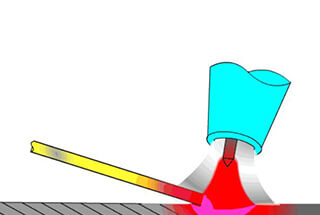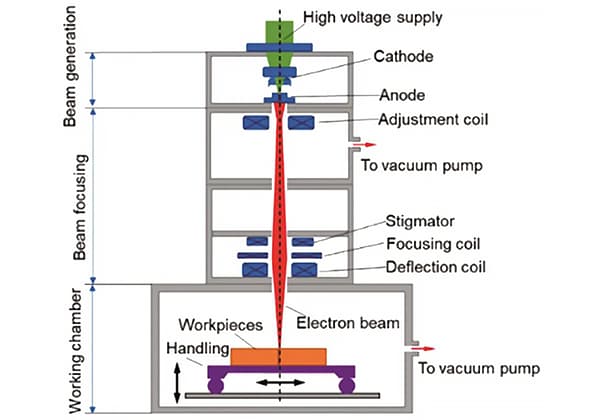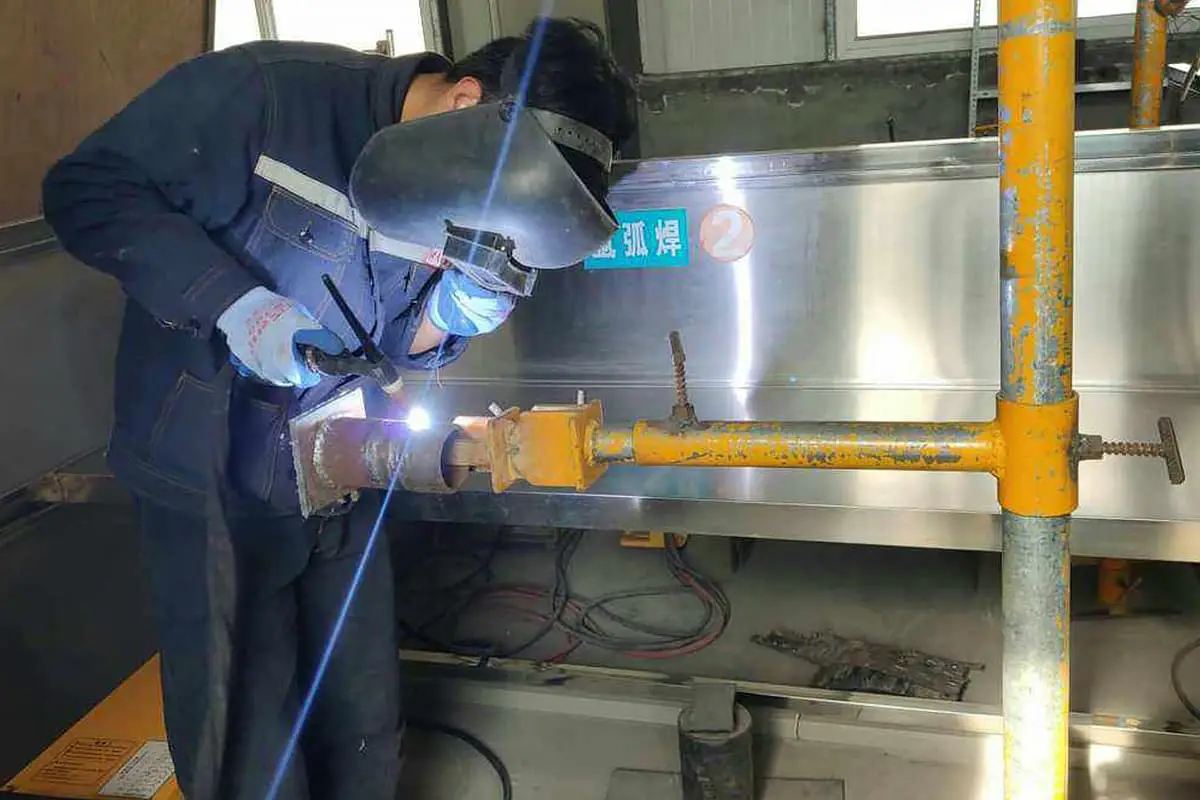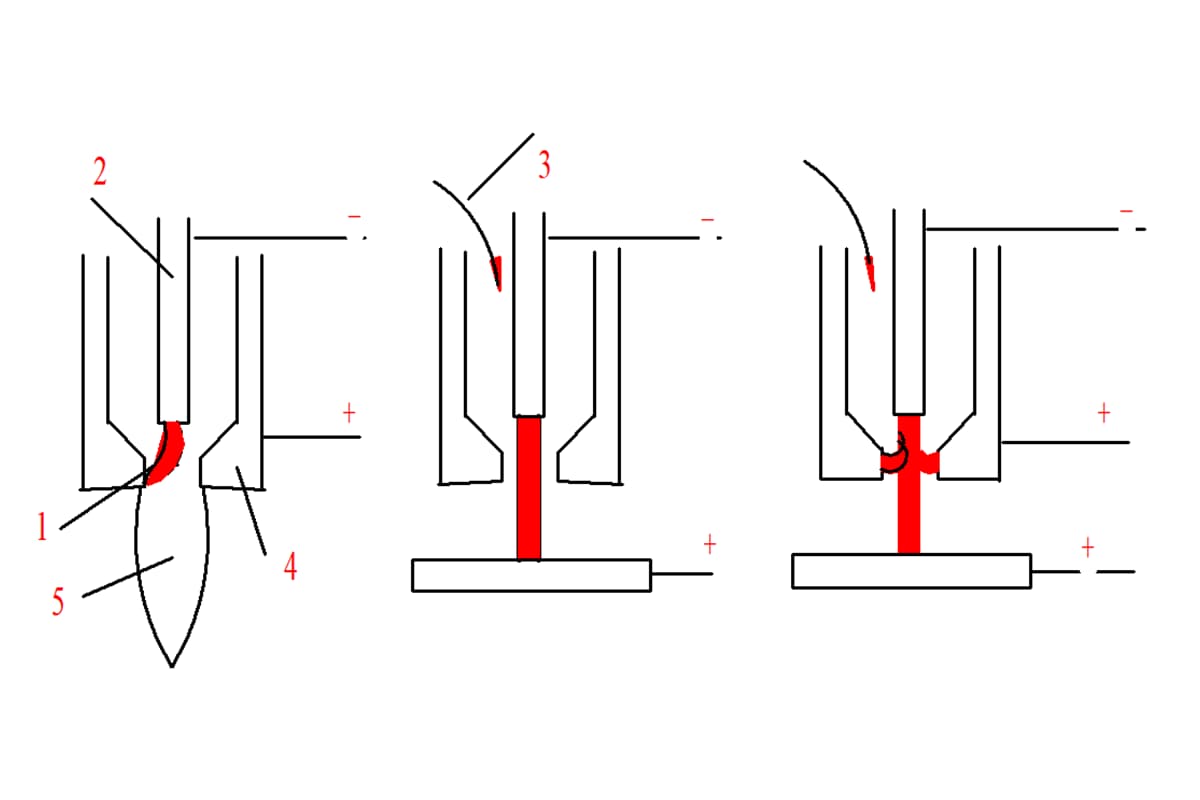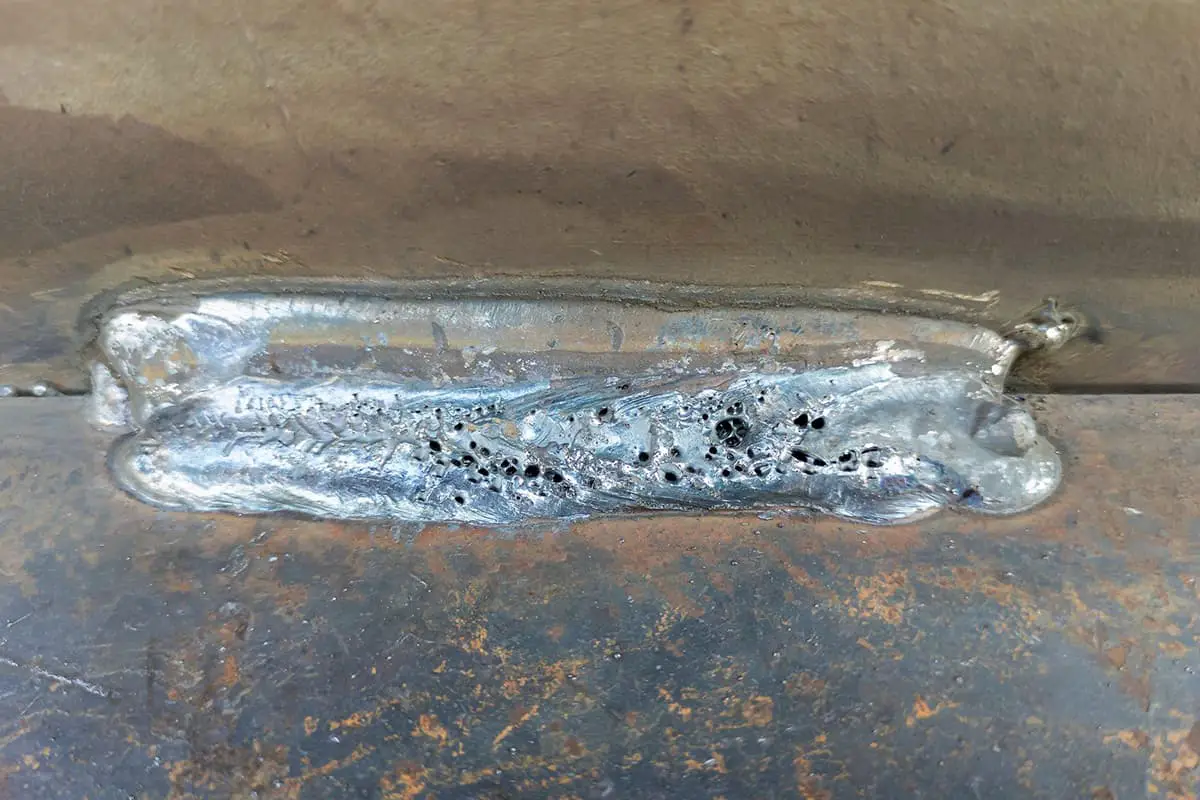
Have you ever wondered about the hidden dangers behind the bright sparks of welding? In this article, we explore the harmful effects of argon arc welding on the human body. You’ll learn about the risks involved and the necessary precautions to ensure safety.

Argon arc welding has a higher degree of harm compared to electrode arc welding, but it is not cause for alarm. The level of infrared radiation produced during argon arc welding is about 1 to 1.5 times greater than that of ordinary electrode arc welding, and the ultraviolet radiation generated is about 5 to 20 times greater.
In confined spaces, the concentration of ozone can reach a dangerous level during the welding process. Additionally, harmful gases such as carbon dioxide, carbon monoxide, and metal dust are produced, which can harm the welder.
Therefore, it is important to take necessary precautions during the welding process, such as using protective equipment and selecting electrode materials with low radioactivity, such as cerium tungsten. Additionally, wearing masks and gloves when grinding electrodes and washing hands after work can help minimize hazards.
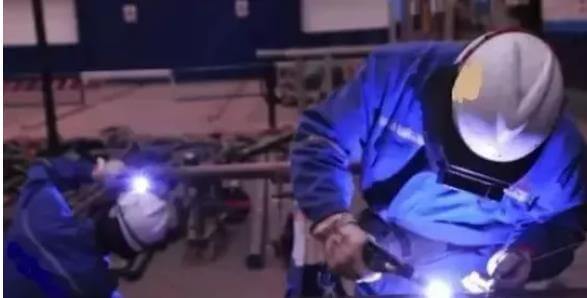
The high-frequency oscillator is often used in welding, with a frequency ranging from 200 to 500 KHz, a voltage of 2500 to 3500 volts, and an electric field strength of 140 to 190V/m. During arc striking, the high-frequency electromagnetic field intensity generated is between 60 to 110V/m, which is several times higher than the reference hygiene standard of 20V/m.
In non-melting electrode argon arc welding, plasma arc welding and cutting, the high-frequency oscillator is often used to excite the arc, and some AC argon arc welding machines also use it to stabilize the arc. The human body absorbs some radiation energy and experiences biological effects, primarily thermal effects, under the action of the high-frequency electromagnetic field.
The intensity of the high-frequency electromagnetic field can vary based on factors such as distance; the closer the oscillator and oscillation circuit, the higher the field strength. It also depends on the shielding of the high-frequency component.
Long-term exposure to a high-frequency electromagnetic field by a welder can lead to autonomic nerve dysfunction and neurasthenia, resulting in symptoms such as general discomfort, dizziness, headache, fatigue, loss of appetite, insomnia, and low blood pressure.
While the impact of using the high-frequency oscillator for arc striking is relatively small due to the short time, frequent or continuous use of the oscillator as an arc stabilizing device in the welding process can make the high-frequency electromagnetic field a harmful factor.

Thorium tungsten, used in argon arc welding, contains 1% to 1.2% thorium oxide, which is a radioactive element that emits α, β, and γ rays. During welding and contact with thorium tungsten rods, one may be exposed to radiation.
According to numerous investigations, the daily consumption of thorium tungsten rods is only 100 to 200mg, and the resulting radiation dose is small and has little impact on the human body. However, if welding is performed in a poorly ventilated container, the concentration of radioactive particles in the smoke may exceed hygiene standards. Additionally, during the grinding of thorium tungsten rods and in storage areas for thorium tungsten rods, the concentration of radioactive aerosols and dust can reach or exceed hygiene standards.
If radioactive substances enter the body, they can lead to chronic radioactive diseases and internal irradiation, causing symptoms such as a weakened overall functional state, obvious weakness, decreased resistance to infectious diseases, weight loss, and others.
Encyclopedia:
Radioactive aerosols are particles, either solid or liquid, containing radionuclides that are suspended in air or other gases. They are created by a dispersion system in which solid or liquid radioactive particles are suspended in air or other gases.
The defining characteristic of aerosols is their instability. Particles smaller than 0.1 microns move through the gas due to Brownian motion and do not settle due to gravity. Particles between 1 to 10 microns settle slowly and remain suspended in the air for extended periods of time.
Radioactive aerosols are highly ionizing, have low concentrations, and are easily charged by radioactive decay. They pose the main threat to human body irradiation.

Welding arc radiation mainly consists of visible light, infrared, and ultraviolet. These types of radiation can affect the human body by being absorbed into human tissue, leading to thermal, photochemical, or ionization damage.
The brightness of visible light is about 10,000 times stronger than what is normally tolerated by the naked eye. When the eyes are exposed to visible light radiation, it can cause pain, blurred vision, and temporary loss of work ability, commonly referred to as “dazzling.”
Infrared radiation’s harm to the human body primarily comes from its thermal effect on tissue. In welding processes, the eyes are exposed to strong infrared radiation, which can cause immediate burning pain and flash illusion. Long-term exposure can lead to infrared cataracts, vision loss, and even blindness in severe cases.
Ultraviolet radiation (UV), also known as ultraviolet light, refers to electromagnetic waves with a wavelength range of 100-400 nm. While a moderate amount of ultraviolet radiation can have positive effects on the human body, excessive exposure, such as from welding, can have adverse effects.
The harm of ultraviolet radiation to the human body mainly comes from its photochemical action, causing damage to the skin and eyes. Prolonged skin exposure to strong ultraviolet radiation can cause dermatitis, diffuse erythema, blisters, burning, and itching. In severe cases, it can also cause systemic symptoms such as headaches, dizziness, fatigue, nerve excitement, fever, and insomnia.
Excessive exposure of the eyes to ultraviolet radiation can cause acute corneal and conjunctivitis, also known as electro-optic ophthalmia. Its symptoms include photophobia, excessive tearing, foreign body sensation, tingling, eyelid swelling, spasm, headache, and blurred vision.

During welding, a significant amount of metal welding dust is produced. This metal powder has a small diameter, making it easy to inhale into the lungs. Due to its small size, it is challenging to remove from the body, leading to lesions.
The welding current intensity has a direct relationship with the dust concentration, with higher intensity leading to higher concentration.
Without proper dust removal measures, long-term exposure to high concentrations of welding dust can result in occupational diseases such as welder pneumoconiosis, manganese poisoning, and metal heat.
Reproductive toxicity
Over the past decade, various studies have been conducted both domestically and internationally on the reproductive toxicity of electric welding. These studies mainly focus on the semen quality of male workers, the reproductive outcomes of female workers, and the underlying mechanisms of damage.
The results indicate that female welding workers experience a higher incidence of menstrual volume, cycle shortening, menstrual period prolongation, increased leucorrhea, spontaneous abortion, premature delivery, and dysmenorrhea compared to the control group.
Male workers with manganese poisoning were found to have a uniform gray-white appearance in their semen with normal PH value and a longer average liquefaction time compared to the control group. These workers were also found to have a lower average ejaculation volume, total sperm count, sperm survival rate, and motile sperm rate and a significantly higher sperm deformity rate compared to the control group.
It is believed that manganese can negatively impact the spermatogenic system of male workers by having a direct toxic effect on sperm development, resulting in changes to male semen quality.
Studies conducted abroad have also reported that changes in sex hormone secretion and a decline in sperm quality do not affect the sex ratio of offspring.

During welding, high temperature and strong ultraviolet radiation from the welding arc can result in the formation of harmful gases around the arc. These gases include ozone, nitrogen oxides, carbon monoxide, and hydrogen fluoride.
Ozone is a toxic, light blue gas that can be irritating. At high concentrations, it has a fishy odor and a slightly sour taste. Ozone’s main harm to the human body is its strong irritation to the respiratory system and lungs, causing symptoms such as coughing, chest tightness, loss of appetite, fatigue, dizziness, systemic pain, and in severe cases, bronchitis and pulmonary edema.
Nitrogen oxides are also irritant toxic gases, with nitrogen dioxide being reddish-brown and having a distinct odor. The harm to the human body comes from its stimulating effect on lung tissue, causing nitric acid and nitrite to form after entering the respiratory tract. This strong stimulation and corrosion of lung tissue can result in poisoning.
Chronic poisoning symptoms include neurasthenia, such as insomnia, headaches, loss of appetite, and weight loss. High concentrations of nitrogen oxides can cause acute poisoning, with mild toxicity resulting in acute bronchitis and severe poisoning causing severe coughing, dyspnea, collapse, weakness, and other symptoms. The effects of nitrogen oxides on the human body are reversible and decrease over time.
In TIG welding, if proper ventilation measures are not taken, the concentration of nitrogen oxides can exceed hygienic standards by more than ten to twenty times. The hygienic standard for nitrogen oxides in China is 5mg/m3. In the welding process, ozone and nitrogen oxides often exist together, making them more toxic. The toxicity of these two gases combined is generally 15-20 times higher than that of a single gas.
(1) Ventilation measures
A proper ventilation system should be provided at the argon arc welding site to eliminate harmful gases and smoke.
In addition to the general ventilation of the area, multiple axial flow fans can be installed at high-workload welding areas where welding machines are concentrated for external exhaust.
Local ventilation measures can also be taken to remove harmful gases near the arc, such as an open arc smoke exhaust hood, a smoke exhaust welding gun, a portable small fan, etc.
(2) Radiation protection measures
When possible, it is recommended to use cerium tungsten electrodes with a very low radiation dose.
When grinding thorium tungsten electrodes and cerium tungsten electrodes, a sealed or suction grinding wheel should be used.
Operators should wear personal protective equipment, such as masks and gloves, and wash their hands and face after handling the electrodes.
Both thorium tungsten electrodes and cerium tungsten electrodes should be stored in an aluminum container.
(3) Measures for high-frequency protection
To reduce and mitigate the effects of high-frequency electromagnetic fields, the following measures should be taken:
(4) Other personal protective measures
During argon arc welding, due to the strong effects of ozone and ultraviolet light, it is recommended to wear work clothing made of materials other than cotton, such as acid-resistant tweed or tussah silk.
In situations where welding takes place in a confined space and local ventilation cannot be used, personal protective measures such as an air supply helmet, air supply mask, or gas mask should be used.


